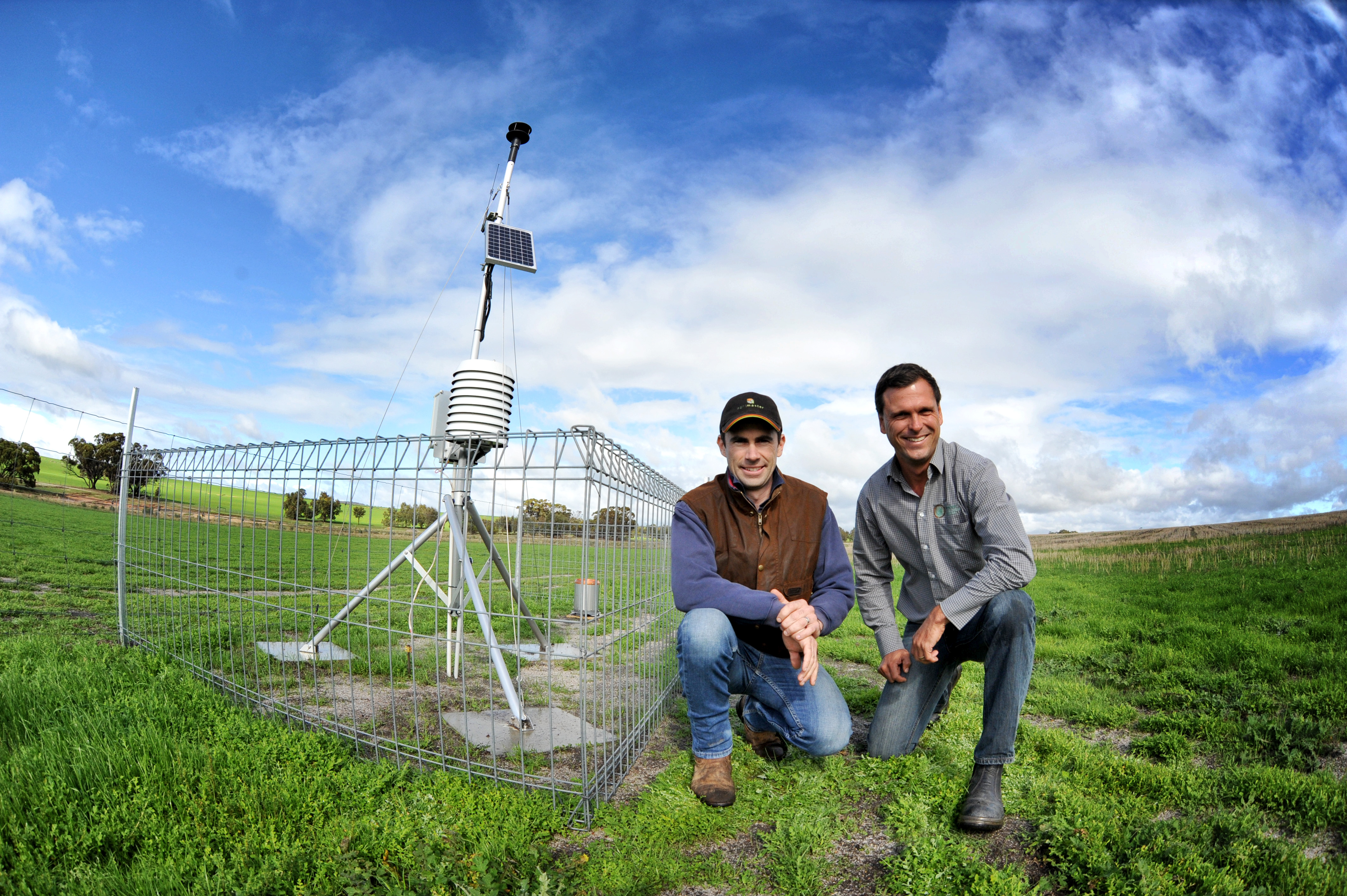Jo Fulwood - Countryman on May 6, 2016, 1:46 pm
Eleven new weather stations in rural WA will make a start on filling the weather data gaps for growers.
Operated by local grower groups, the 11 new stations will complement the 145 weather stations already located in the State.
According to DAFWA e-Connected Grainbelt project manager Tim Maling, the new stations encompass a digital wind probe, and all will be equipped with a soil moisture probe.
He said the weather stations would provide both the department and growers with data on temperature, rainfall, soil moisture, humidity, wind speed and direction, to name just a few.
“Weather station data allows growers to manage their business operations better, both pre-season and in-season,” he said.
“Soil moisture, temperature and rainfall data all provide a guide to predicting crop yields, and we already use this information in our Yield Prophet predictive tool.
“As another example, knowing the wind speed and Delta-T is crucial for farmers when making a decision on spraying conditions.”
Mr Maling said DAFWA was initially going to install only five new stations, but given the interest from grower groups, the number of stations was increased to 11.
He said the new stations would provide grower groups with an opportunity to work with farmers in improving an understanding of the value of weather data.
“Grower groups can run events at these sites to assist growers in using this technology, training them along the way, while also provide us with feedback as to how we can make these tools more useful to them,” he said.
One of the weather stations will be hosted by Wheatbelt NRM and housed at the UWA Ridgefield Farm in Pingelly as a part of the Future Farm 2050 project.
Wheatbelt NRM program manger sustainable agriculture Guy Boggs said the first objective for the group would be to provide a focal point where growers, researchers and advisers could discuss the importance of weather station data.
“The feedback and learning from these sites will provide information back to DAFWA to assist them develop practical tools and technology that will support growers in their on-farm decision-making,” he said.
“We’ve been looking at linking this with the other moisture probes and weather stations already on the Future Farm, including the Oz-Flux weather site that measures broader evaporation patterns, carbon patterns and gas exchanges.
“In this way it will be part of the bigger picture in understanding moisture dynamics and we will be able to use this information to improve productivity on-farm and with less inputs.”
UWA Ridgefield farm manager Steve Wainewright said the e-Connected Grainbelt weather station would complement the data obtained from two other weather stations on the Future Farm and the moisture probe would be particularly important for providing data on fertiliser application.
“We will be doing some gross margin modelling, tracking the sub soil moisture data throughout the year, and revising our nitrogen application strategies based on this data, particularly towards the end of the season,” he said.
The 11 new weather stations will be hosted by the following 14 grower groups:
- Corrigin Farm Improvement Group (Corrigin)
- Facey Group (Wickepin) Far East Agricultural Research Group (Moorine Rock)
- Merredin and District Farm Improvement Group (Merredin)
- Mingenew Irwin Group (Mingenew) South East Premium Wheat Growers Association (Esperance)
- Southern DIRT (Kojonup) and West Arthur Trials Group (Darkan)
- Stirlings to Coast Farmers (Mount Barker) and Gillamii Centre (Cranbrook)
- West Midlands Group (Dandaragan)
- Wheatbelt Natural Resource Management Inc (Northam)
- Yuna Farm Improvement Group (Yuna) and
- Mullewa Dryland Farming Initiative Group (Mullewa)


